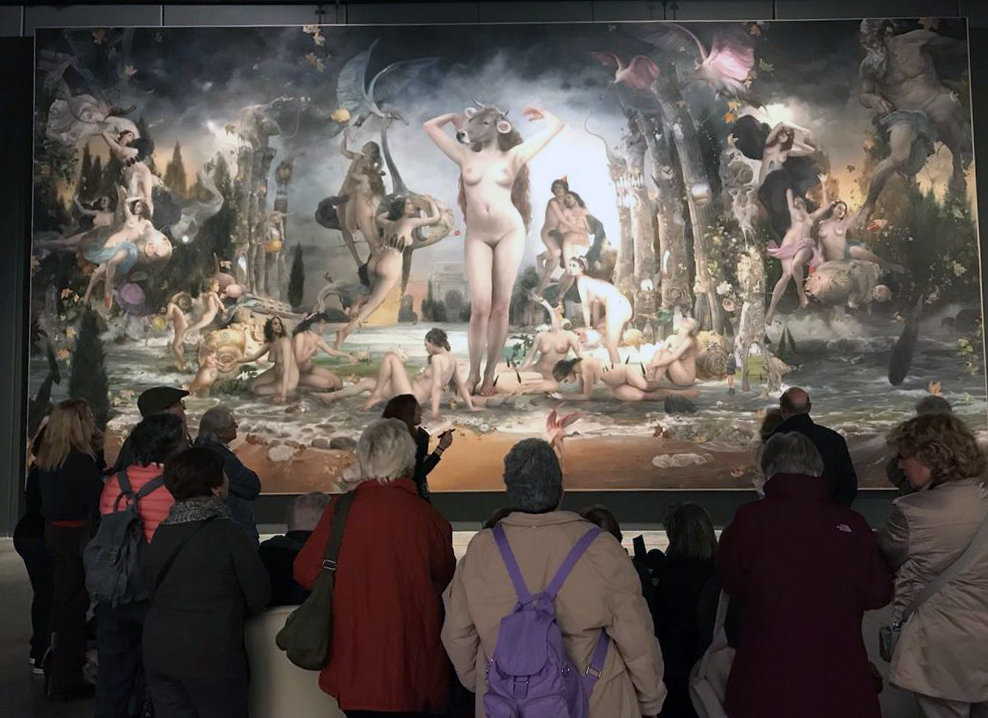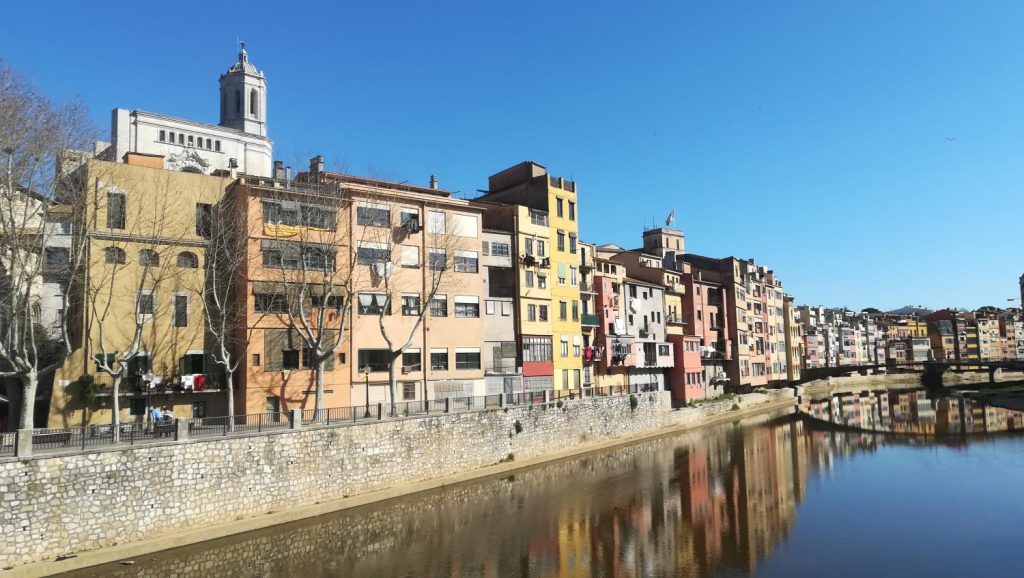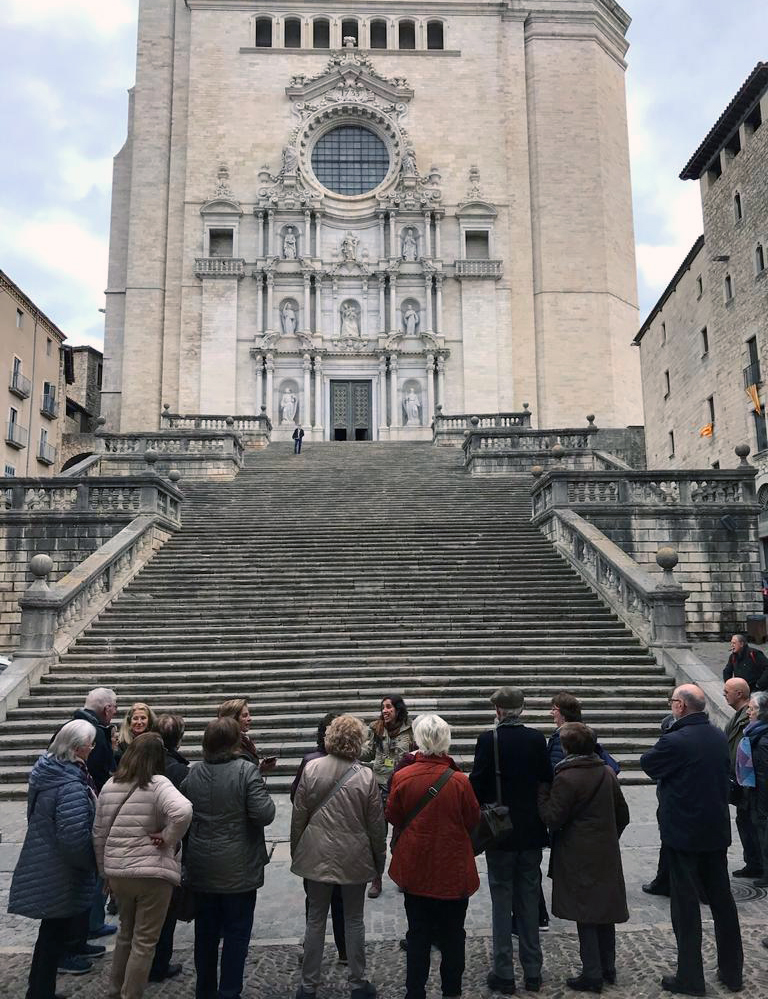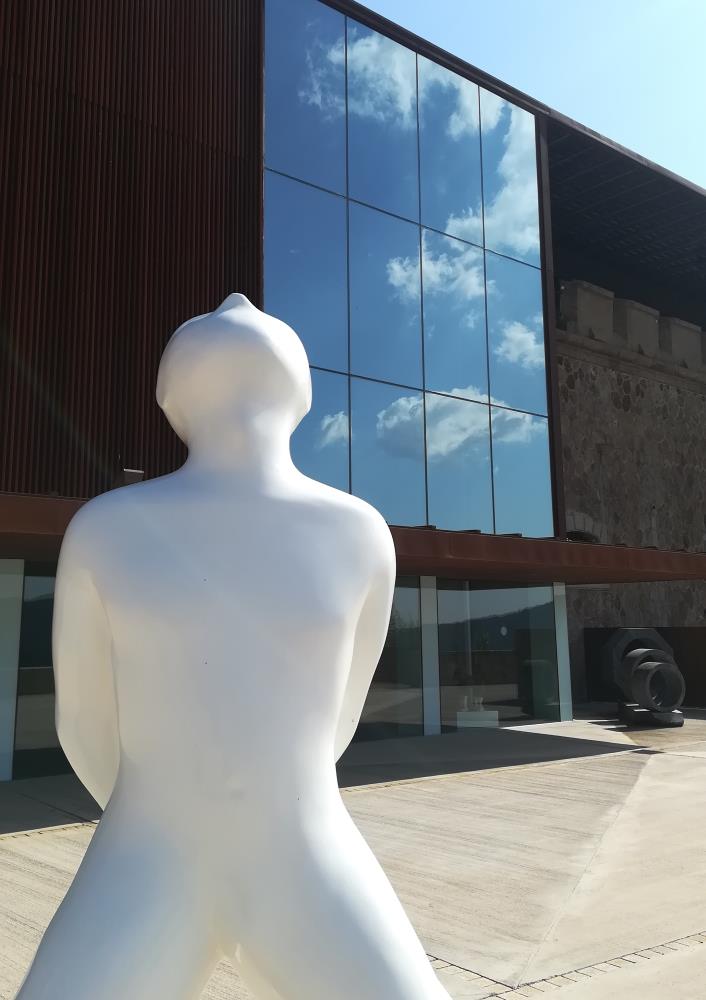Natàlia Esquinas
One of the aims of the Friends of the Museu Nacional is to cultivate the feeling of admiration of our heritage. That’s precisely why, besides the visits to the museum rooms and the collection, we propose different activities that allow us to experience art beyond our museum walls: itineraries on foot, day trips by coach, weekend trips and personalized cultural trips.
The first semester of 2019 I had the opportunity to take the Friends to a couple of itineraries on foot. The first took us to Girona. The second, to the Maresme shore.
A stroll around the Girona region
The day began in Sant Julià de Ramis to get to know the Dor Museum which is hidden in a military fortress that was constructed between the end of the 19th century and the beginning of the 20th century. After a coffee to build up our energy, we started to explore the recent museum, which is not even one year old yet. Jewels, precious stones, spectacularly shaped gems, pieces of crockery and sculptures, allowing us to get to know the skills of such prominent names as Elsa Peretti, Amador Braojos or Rosa Bisbe. In addition, the museum dedicates a space to the great Josep Maria Subirachs, providing us with an excellent review of his artistic career.
As if that wasn’t enough, we had time to discover a unique space: the studio and gallery of Quim Hereu, the painter defined as the maximum proponent of Strambotism. Yes, you read it correctly: Strambotism. To say that his painting is bizarre or even odd, is too obvious . Place in a cocktail-shaker artists as varied as Dalí, Botticelli, Collier, Bouguereau, Magritte, and who knows how many more, and you will begin to approach the art of Hereu.

The mornings are for the public. The afternoons and evenings are the moments in which the artist works on his artworks, some of which are huge canvases that are exhibited in the space. So, having had lunch in the restaurant run by the famous chef, Jordi Cruz, we headed to Girona.

After crossing the river Onyar, at the foot of the mythical steps that make us raise our eyes towards the Cathedral, we found out about part of the origins of the walled city, understanding the reasons for its aspect, and enjoying the spaces that seem to have been held up in time. A few minutes later, Mela Muter awaited us to catch us in every look.

The expressiveness of her brushstrokes, the roughness in the textures caused by the painting paste positioning seems to draw out all the experiences lived, all the thoughts and scars that marked her existence. Mela Muter did not leave us indifferent and her work remained caught in our retinas while crossing the Devesa park, ready to go back to Barcelona.
The Friends on the Maresme
Only to get a brief taste, the second excursion of the year had two notable protagonists: the hats reunited by Josep Casamartina in the Fundació Palau of Caldes d’Estrac and Arenys de Mar.
Dedicating a few hours to exploring the art of Arenys was simply not enough when given by Joan Miquel Llodrà, a local from Arenys and guide that you can find throughout the Catalan geography, who showed us around some of the most artistic corners of his town: starting with the cemetery, we walked around the parish church of Santa Maria, the Museu de la Punta (The Lace Museum) and he showed us some other secrets that we couldn’t even have imagined. And, in each stroll of the Friends, there are details that are brand new and totally surprising!
Do you feel like coming with us next time? If you want, you can see all our activities at http://www.amicsdelmnac.org/en or call us at 93 622 03 81, we’d love to tell you all about it!









